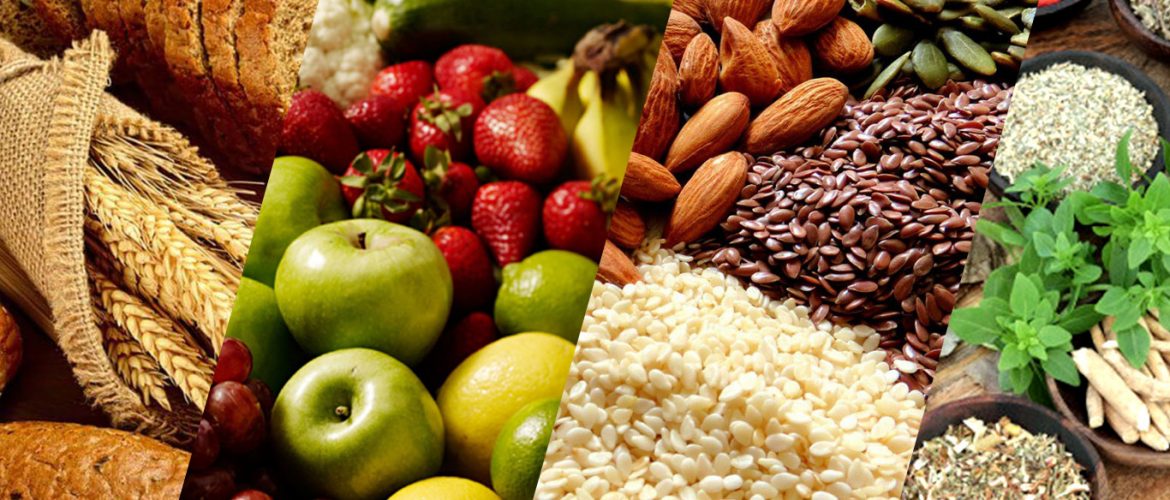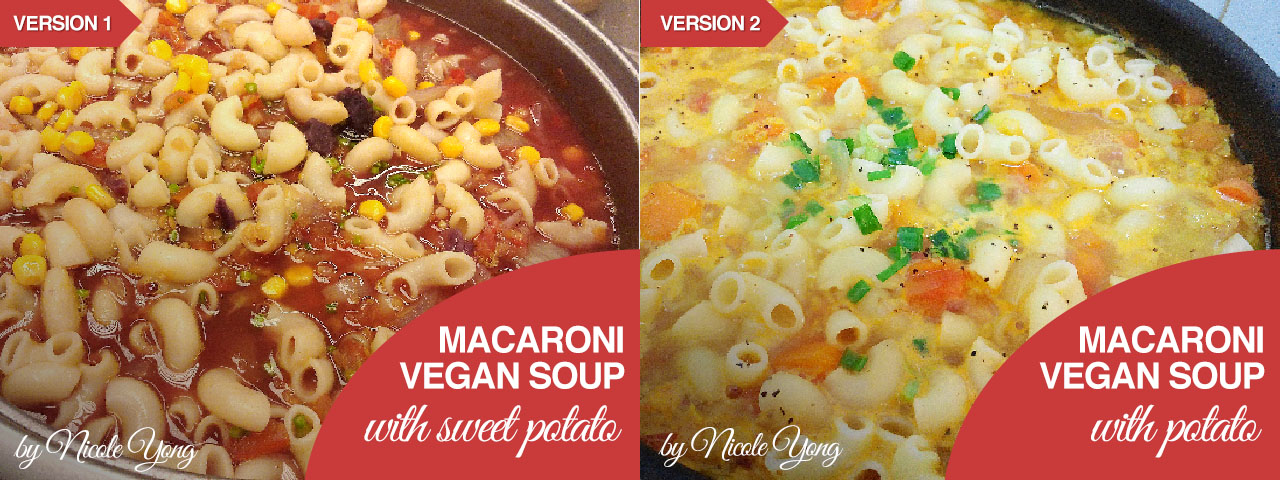Modern Yogi in the Kitchen: Eat to Support Your Practices
- November 28, 2017
- Posted by: admin
- Category: Articles by Practitioners,

By Nicole Yong
Are you only aware of the physical side of Yoga — the asanas, or postures, only?Yoga is much more than that. It is a way of life. It guides us towards healthy living, right ethics and practices, and to realise our higher potential. Hence, the food we consume cannot be overlooked.
According to Ayurveda, suppleness encourages the Prana (life force) to circulate smoothly throughout the body via the Nadis (energy channels) and promotes longevity. So, we practise Yoga asana with the objective of developing strength and flexibility. It also improves the circulatory, respiratory, digestive and excretory systems in the body.
Ayurveda, considered a sister science to Yoga, suggests a “Sattvic” diet to support the practice. We call it the “Yogic Diet”. Sattvic food is health-promoting natural food such as multi grains, fruits, vegetables, nuts and seeds, and kitchen herbs.
In fact, Sattvic food is easy to digest. Some have anti-inflammation properties, which quickly turn into nutritional fluids that are absorbed by the body; assist in dissolving accumulated “Ama” (toxins) and help to conserve energy level and increase “Ojas”, the vital nectar of life. This group of food has the essence to promote better flexibility and lubricate our joints, muscles, ligaments and tendons. Most importantly, it calms our central nervous system and balances up the secretion of hormones.
Sattvic diet, which is a pure vegetarian diet, promotes the attitude of ahimsa (non-violence). It avoids foods that involve harming of animals. Hence, this diet develops the quality of love, harmony and peace.
It can be called lacto-vegetarian, which excludes meat, fish, poultry and eggs, but includes dairy products such as milk, cheese and yogurt; and also honey. From the nutritional perspective, vegetarian diets are lower in saturated fats, cholesterol and animal protein, and higher in fibre, vitamins, minerals and antioxidants compared with non-vegetarian diets. Therefore, vegetarian diets tend to significantly help promote healthy colons, reduced risk of constipation, reduced risk of obesity, high blood pressure, high cholesterol level, heart disease and diabetes.

Some people ask me: “Since you are practising Yoga, are you a vegetarian?”
My answer: “Before 2013, I was not a vegetarian. After learning to develop healthy eating habits and Yoga practices, now I am a pescatarian — I occasionally add fish to my diet.”
Practising intuitive eating is a journey
In the beginning, I did not put any restriction on myself, but later I learnt to have a more balanced diet. I eat mostly natural food, in moderation. Though I prepare vegetarian meals more often now, I also listen to my cravings and my body responses to food.
Sometimes, I completely follow the Yogic diet. When practising Yoga asana, I feel my body is more flexible, there is no heaviness and the mind is clear. To me, it is a positive experience; a positive change.
We have learnt that changes in eating habits ought to be developed gradually. So we can start with a semi-vegetarian diet first. It is primarily a plant-based diet, but includes meat, dairy products, eggs, poultry and fish on occasion or in small quantities. Gradually, we can change to lacto-ovo vegetarian diet — which excludes meat, fish and poultry, but allows dairy products and eggs.
Simple guideline on how to follow a yogic diet
- Fruits
- All vegetables – except onion and garlic
- Whole grains
- Legumes
- Plant-based oils, such as sesame, sunflower, grape seed and olive oil
- Nuts and seeds, but not overly salted or overly roasted
- Natural raw sugar and molasses
- Herbal tea, ginger tea and water with lemon or lime – except coffee and iced beverage
- Some kitchen spices added to meals, but not too much, such as cinnamon, cardamom, black pepper, turmeric, ginger and cumin
Think of what the body needs today. Do not overeat. Think of foods that make us strong and keep us balanced and happy.
If can, cook your own food at home as often as possible with a feeling of love and gratitude. Let it be a gift to you and your family.
When you have cravings for meat, processed food, junk food, over-spiced food, garlic, onion and stimulants like alcohol, tea and coffee for a few days; and by the end of the week you feel heavy and unpleasant during the practices, it is alright. Perhaps you may eat more natural food such as grains, vegetable and fruits in the following week and encourage yourself to do better.
At the same time, observe how the diet makes you feel. Do you feel any changes when you practice Yoga asana? Notice the patterns in your digestion, sleep pattern and energy level. Yes, we live according to “our truth”. We learn to extend the practice of awareness into our daily life.
Some people may say vegetarian food is tasteless. This may be due to a lack of knowledge in food preparation.
We know that our body needs all nutrition such as carbohydrates, fats, protein, vitamins and minerals from different groups of natural foods in order to function well, hence we should learn how to cook these groups of foods and turn them into delicious dishes for ourselves and our beloved family members. There are a variety of vegetarian cookbooks available in the book shops. We can also attend vegetarian cooking classes, or courses. Believe it or not, vegetarian dishes can be very tasty indeed.
Recipe for busy working Yogi/ Mama: One Pot Fusion Warm Macaroni Vegan Soup
Let me share a simple recipe — One Pot Fusion Warm Macaroni Vegan Soup — a stomach-friendly comfort food. One pot meals are my favourite. It saves time and easy to clean up. Hopefully, it will be an inspiration to keep you making healthy meals for yourself and your loved ones. Just sit back and relax.

One Pot Warm Macaroni Vegan Soup (cooked for 2 persons)
Ingredients:
1 bowl Purple Sweet Potato cut in cube
½ bowl Red Lentils (Soaked advance 30 minutes)
4 large tomatoes – roughly chopped
1 White Onion – cut in cube (Optional)
½ bowl sweet corn½ bowl carrot cut in cube
½ teaspoon Turmeric
1 tablespoon Ginger mince
½ teaspoon Cumin
½ teaspoon Garam Masala
½ teaspoon Cayenne Pepper
½ teaspoon black pepper
½ tablespoon Cold press Grape Seed oil
Sea Salt to taste
Notes:
Aside from the veggies listed in the recipe, you may substitute and use a variety of other vegetables like potatoes, broccoli or cabbage.
Preparation:
- Heat the pot/ big pan and add in grapeseed oil. Put in ginger mince, cumin, onion, turmeric, garam masala, cayenne pepper and cook for 3 minutes.
- Pour in 600ml water, red lentils, purple sweet potato, tomatoes and carrot into the pot/big pan. Simmer for 20 minutes in medium-low flame.
- Add the cooked macaroni, sweet corn, black pepper and sea salt.
- Remove from the heat. You may add some parsley on top. Serve while the food is warm.
Sattvic diet gradually becomes our natural choice
With continued awareness about the body through Yoga practices, we may find that the Sattvic diet gradually becomes a natural choice. In fact, even applying a few of these Yogic diet suggestions will enhance our well-being and reduce the risk of getting chronic diseases. We do not need to be a “Yogi” to switch to a Yogic diet. As we adopt a Yogic diet, we indirectly become a role model to family members and the children on how to eat well. Everyone deserves a healthy, happy, long life.
